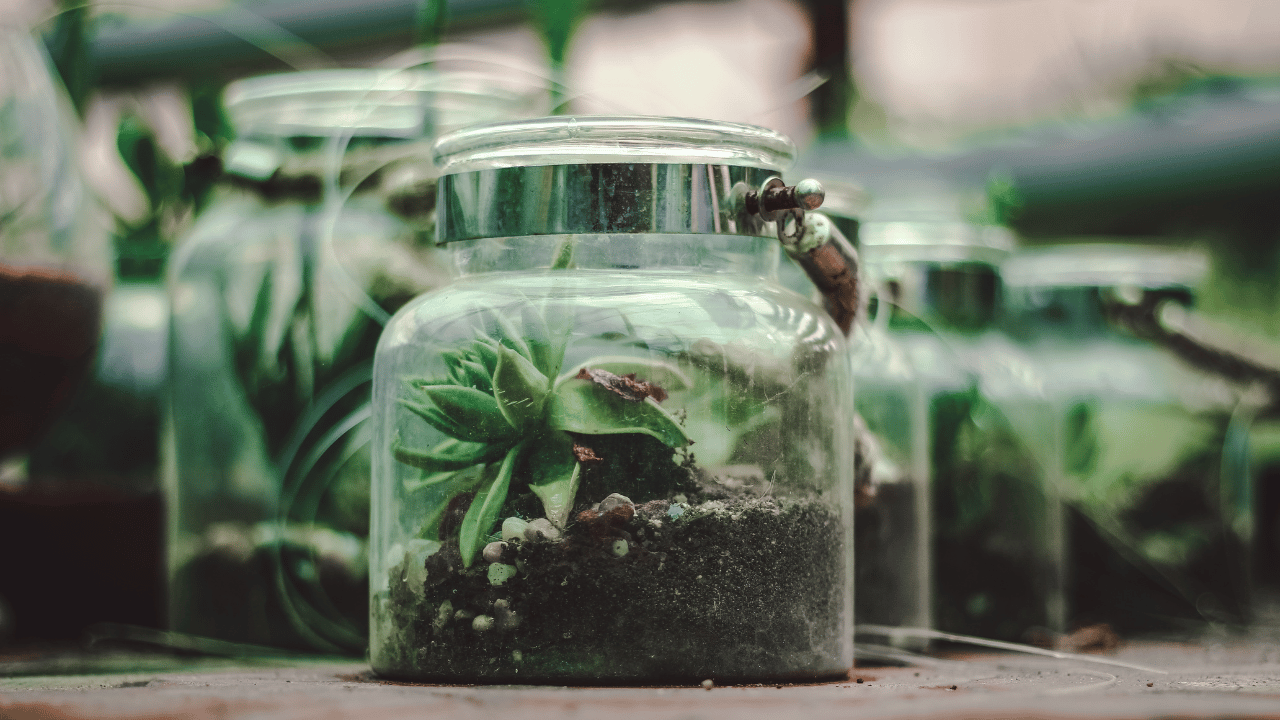Terrariums are miniature gardens that bring a touch of nature indoors. They’re easy to make, low-maintenance, and offer a calming, creative activity for seniors. Sponsored by SeniorHMOplans.com, this guide will show you how to design and care for a DIY terrarium step by step. Along the way, you’ll learn tips for customization and long-term enjoyment. For more engaging ideas tailored to seniors, visit SeniorSearching.com!
Why Create a Terrarium? Terrariums offer more than just a decorative touch to your home. Here are some reasons why seniors love creating them:
- Relaxation: The process of assembling and tending to a terrarium is meditative and stress-relieving.
- Creative Outlet: Personalizing your terrarium allows for self-expression.
- Low Maintenance: Terrariums require minimal care, making them ideal for those seeking a hassle-free hobby.
- Connection with Nature: Even without a garden, you can enjoy the beauty of plants in a compact space.
Step 1: Gather Your Supplies To get started, you’ll need the following materials:
- Glass Container: A jar, fishbowl, or vase works well. Ensure it’s clear for visibility.
- Small Rocks or Pebbles: Used for drainage at the base.
- Activated Charcoal: Prevents odors and keeps the terrarium fresh.
- Potting Soil: Choose soil suited for the type of plants you’ll use.
- Plants: Select low-maintenance options like succulents, moss, or air plants.
- Decorative Elements: Add personal touches with small figurines, shells, or colored sand.
Pro Tip: Use gloves and small tools for precise placement of materials.
Step 2: Prepare the Base A good foundation ensures a healthy terrarium. Follow these steps:
- Add Pebbles: Place a 1–2-inch layer of small rocks or pebbles at the bottom of the container to help with drainage.
- Layer Charcoal: Sprinkle a thin layer of activated charcoal over the pebbles to prevent mold and odors.
- Add Soil: Fill the container with a few inches of potting soil. Adjust the depth based on the size of your plants.
Step 3: Select and Arrange Plants Choose plants that thrive in similar conditions:
- Succulents: Prefer dry conditions and need plenty of light.
- Mosses: Thrive in shaded, humid environments.
- Air Plants: Require minimal soil and are easy to rearrange.
Arrange the Plants: Start with the largest plant as the focal point, then add smaller plants around it. Use tools like tweezers or a spoon for precise placement.
Step 4: Add Decorative Touches Personalize your terrarium with decorative elements:
- Place small figurines or ornaments for a whimsical touch.
- Add shells, stones, or sand for a natural look.
- Use colored sand or gravel to create patterns and layers.
Pro Tip: Avoid overcrowding to ensure plants have room to grow.
Step 5: Care and Maintenance Terrariums are low-maintenance, but they still need some attention:
- Watering: Lightly water the soil when it feels dry, but avoid overwatering. Succulents need less water than mosses.
- Lighting: Place the terrarium in a spot with indirect sunlight. Avoid direct sun, which can overheat the container.
- Pruning: Remove any dead leaves or overgrown plants to maintain the balance.
Step 6: Enjoy Your Creation A DIY terrarium adds beauty and tranquility to your home. It’s also a great conversation starter and a thoughtful gift for friends and family. You can also make themed terrariums, such as seasonal designs or ones inspired by your favorite places.
Conclusion: Creating a DIY terrarium is a fun and rewarding way to bring nature into your home. It’s perfect for seniors looking for a creative, low-maintenance project. Ready to start? Visit SeniorSearching.com for more inspiring ideas. And remember, SeniorHMOplans.com is here to support your health and happiness every step of the way!


